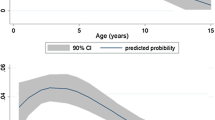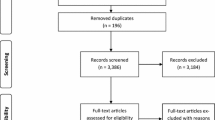Abstract
Background
Improving generic drug development in oncology is a key long-term goal in providing safe, effective, and affordable care to patients with a diagnosis of cancer in the United States. There are multiple drug and non-drug related variables that may influence generic drug development. To illustrate pertinent associations relevant to generic drug competition in oncology, our study assessed variables that have potentially led to difference in generic competition as compared to drug products in other therapeutic areas, i.e., cardiovascular disease in this case.
Methods
Using a combination of FDA and publicly available data, we categorized individual drug approvals from 1950 to 2021 with either an oncology or cardiovascular indication. Descriptive statistics highlighted the timeline of approval as stratified by indications. Machine learning methodology was used to assess variables associated with abbreviated new drug application (ANDA) availabilities (i.e., generic drug availabilities). Kaplan–Meier analysis with log-rank test compared the difference in the time to approval of first ANDA among products that were off-patent at the time of analysis. A multivariable Cox proportional hazards model with forward selection was used to identify variables (e.g., regulatory recommendation issued, dosage form) that were associated with ANDA availability among products that were off-patent.
Results
434 separate reference listed drugs (RLDs) with varying strengths were identified, 212 (49%) for oncology and 222 (51%) for cardiovascular indications. Compared with cardiovascular products, a greater proportion of RLDs with an oncology indication were approved after 2000 (61% vs. 34%). Also, a smaller proportion of oncologic products had generics (49% vs. 80%). Machine learning methodology revealed RLD age, patent status, product complexity, sales/prescriptions, and regulatory recommendations as variables that were associated with generic availability. Among products off-patent at the time of analysis, the median time from RLD approval to the first ANDA approval was longer for oncologic products compared to cardiovascular products (15.4 years (95% CI 13.8, 17.9) versus 12.3 years (95% CI 10.7, 13.5), p = 0.008). Cox regression analyses identified the variables of product dosage form and regulatory recommendation of requiring patient enrollment for bioequivalence (BE) establishment as being associated with reduced likelihood of ANDA approval for oncologic drugs.
Conclusion
Oncology indications were found to have a longer time from RLD approval to first ANDA approval compared with cardiovascular drugs. Our work has identified variables that may influence time to ANDA availability, with the requirement of patient enrollment for BE assessment as one important opportunity for future stakeholder engagement and regulatory considerations.



Similar content being viewed by others
Data availability
Not applicable.
References
Darrow JJ, Avorn J, Kesselheim AS. FDA approval and regulation of pharmaceuticals, 1983–2018. JAMA. 2020;323(2):164.
Siegel RL, Miller KD, Jemal A. Cancer statistics, 2020. A Cancer J Clin. 2020;70(1):7–30.
Park J, Look KA. Health care expenditure burden of cancer care in the United States. J Health Care Organ Provis Financing. 2019;56:004695801988069.
Kesselheim AS, Avorn J, Sarpatwari A. The high cost of prescription drugs in the united states: origins and prospects for reform. JAMA. 2016;316(8):858–71.
Gupta R, et al. Generic drug approvals since the 1984 Hatch-Waxman act. JAMA Intern Med. 2016;176(9):1391.
Lee C-Y, et al. Forces influencing generic drug development in the United States: a narrative review. J Pharm Policy Practice. 2016. https://doi.org/10.1186/s40545-016-0079-1.
Abbreviated New Drug Application (ANDA). 2021. Available from: https://www.fda.gov/drugs/types-applications/abbreviated-new-drug-application-anda.
Dusetzina SB, et al. Medicare part D plans rarely cover brand-name drugs when generics are available. Health Aff (Millwood). 2020;39(8):1326–33.
Robinson JC, Jarrion Q. Competition from biosimilars drives price reductions for biologics in the French single-payer health system. Health Aff (Millwood). 2021;40(8):1190–7.
Dusetzina SB, et al. Cost sharing and adherence to tyrosine kinase inhibitors for patients with chronic Myeloid Leukemia. J Clin Oncol. 2014;32(4):306–11.
FDA. Orange Book: Approved Drug Products with Therapeutic Equivalence Evaluations. 2020. Available from: https://www.accessdata.fda.gov/scripts/cder/ob/index.cfm.
FDA. Product-Specific Guidances for Generic Drug Development. 2021. Available from: https://www.accessdata.fda.gov/scripts/cder/psg/index.cfm.
Database, I.: Available from: https://www.iqvia.com/ (2021).
Letter, G.D.U.F.A.G.I.C.; Available from: https://www.fda.gov/media/101052/download.
R Core Team R: A language and environment for statistical computing. R Foundation for Statistical Computing, V., Austria. Available from: https://cran.r-project.org/web/packages/partykit/index.html (2022).
Hothorn T, Hornik K, Zeileis A. Unbiased recursive partitioning: a conditional inference framework. J Comput Graph Stat. 2006;15(3):651–74.
FDA Drug Competition Action Plan. 2022. Available from: https://www.fda.gov/drugs/guidance-compliance-regulatory-information/fda-drug-competition-action-plan.
Desai S, McWilliams JM. Consequences of the 340B drug pricing program. N Engl J Med. 2018;378(6):539–48.
Miller KL, et al. Drugs and biologics receiving FDA orphan drug designation: an analysis of the most frequently designated products and their repositioning strategies. Expert Opin Orphan Drugs. 2022;9(11–12):265–72.
M9 Biopharmaceutics Classification System Based Biowaivers. 2021. Available from: https://www.fda.gov/media/148472/download.
Implementation of the Biologics Price Competition and Innovation Act of 2009. Available from: https://www.fda.gov/drugs/guidance-compliance-regulatory-information/implementation-biologics-price-competition-and-innovation-act-2009.
Author information
Authors and Affiliations
Contributions
VK: Substantial contribution to concept and design, drafting manuscript, final approval, and agreement for accountability for all aspects of work. FW: Substantial contribution to concept, design, analysis, drafting and revision of manuscript, final approval, and agreement for agreement for accountability for all aspects of work. MH: Substantial contribution to concept and design, manuscript revision, final approval, and agreement for accountability for all aspects of work. PK: Substantial contribution to concept and design, manuscript revision, final approval, and agreement for accountability for all aspects of work. LZ: Substantial contribution to concept and design, manuscript revision, final approval, and agreement for accountability for all aspects of work.
Corresponding author
Ethics declarations
Conflict of interest
The authors have no conflicts of interests to declare.
Additional information
Publisher's Note
Springer Nature remains neutral with regard to jurisdictional claims in published maps and institutional affiliations.
Supplementary Information
Below is the link to the electronic supplementary material.
Rights and permissions
About this article
Cite this article
Kumar, V., Wang, F., Hu, M. et al. Landscape Analysis of Generic Availability for Oncologic Drugs. Ther Innov Regul Sci 57, 1279–1286 (2023). https://doi.org/10.1007/s43441-023-00562-w
Received:
Accepted:
Published:
Issue Date:
DOI: https://doi.org/10.1007/s43441-023-00562-w




